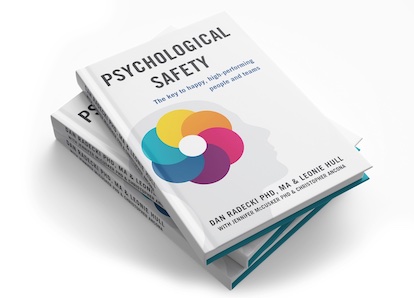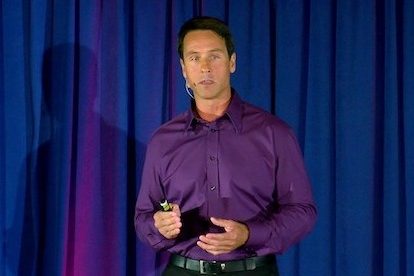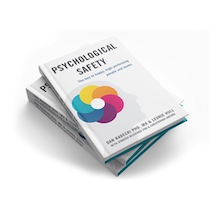How to unleash your employees talent and passions
Today, let’s face it, the great resignation is about a search for freedom through work-life alignment. People know that work is a life necessity and they are going to burn a significant amount of their time on this earth working on certain projects and working with certain people. Because of this deeply felt reality, companies who want to retain their best employees are going to benefit from recognizing this reality and adjusting to it – which may be easier done than it seems at first glance.
We can break the problem down into two components:
1. Work-Life alignment which has to do with a person connecting “what they do” to their “felt purpose” in life, and
2. Working with people they enjoy working with
At first, these 2 things may seem impossible, but it all may be simpler than most realize. Let’s go through them one-by-one.
#1. The Work-Life Alignment problem
How in the world do you create this? It seems like a sorting problem – like you just have to sort through people who have a life purpose that aligns with the job you want them to do.
But when it comes to a person working on a warehouse floor for long days and going home with sore feet, coming up with work-life alignment seems impossible. But it’s not impossible if the manager can understand their employee’s deepest desire to be important – their need for Esteem. When a manager can express the importance of a job such that the employee can see how their work fits into the bigger picture, the employee will see the work-life alignment for themselves.
When I was younger, I worked in a window factory as the glass warehouse manager. I had tons of interactions with people in nearby departments including the guys cutting the glass for custom windows, the ladies assembling aluminum inserts to space the 2 sheets of glass, and also, the worst position of all – the guy running the terribly smelly “goop gun” that sealed the 2 window panes together. This job was HORRIBLE. The “goop” as we called it was some sort of tarry substance that was hot, very sticky, and smelly – I mean, terribly, horribly smelly. The person had to stand all day, pick up double panes of glass that could slide around, put it on a turn table, grab the goop gun, and goop the outside while the window turned. The goop would unavoidably get all over your clothes, you could not avoid the smell even with a face mask, and there was no AC in the factory, so you were working with that hot smelly thing in the heat. The guys who did this job did it for a long time, there wasn’t much turnover. Why?
To be sure, they were paid a little more…Like instead of the standard $6.5 per hour, they got something like $8 per hour – which is still not a lot … but when I asked the “goop guy” about it over lunch, he said that he liked that job because he understood that his job was keeping kids warm, or cool and keeping parents’ electricity bills low – if he did it right. See, the goop is what assures the window insulation works and heat can’t pass through the window as easily – which keeps electricity bills down and of course, when put into a child’s bedroom, helps with temperature regulation. In his mind, his work was not only paying to take care of his family, but it was also taking care of others’ families – and it was hard, so he was proud to be able to do the difficult but important job that not everyone could do or was willing to do.
As horrible of a job as it was to an outside observer, he felt that he was special for doing this difficult and important job – and he found work-life alignment in it. His job gave him a sense of Esteem … and who gave that to him? Well, both the training course that taught him how to do that job and explained its importance to the window quality and, of course, his boss who helped him understand that perspective in many little ways based on what he knew about this person through their relationship.
This type of approach is not something difficult to do for many jobs. It simply requires the manager to get to know their employees and to be able to take a bigger picture look at the work that his people are doing.
Yes, this approach takes work, but so does an alternative approach that leads to higher turnover and always needing to recruit, hire and train new people. So, this approach allows managers to build connections to their teams through a common recognition of the bigger picture contribution being made. It is the more human approach, the approach of a leader who is empathetic and inspiring – and the approach that creates esteem for the team – making it worth coming back to work every day.
Now, once you have that, you already are on a road to solving the second issue.
#2. Working with people who you enjoy working with
When team members see how their work fits into the bigger picture, they can already feel like they are part of something important. And a team who feels connected to a larger purpose with common pride is already setting the stage for connection, but there is more.
Teams can still fight and create stupid conflicts – many times over misunderstandings. This is where an understanding of a “3rd perspective” on themselves and their teammates can help – an outside perspective. A perspective where they can look at each other and understand that these fights are not always between the people, but between the differing needs of their unique brains.
Neuroscience and Social Psychology have identified 6 core domains that every human brain needs. These domains exist on a continuum from high need to low need. Issues can arise in teams and relationships when people’s brains have different needs and sensitivities to these domains. This misalignment of brain needs and perspectives can result in misunderstanding and conflicts.
To make this obvious, take the example of the person who’s brain has a high need for Security. With Security as a driver they are always looking for schedules, procedures, definitions of roles and responsibilities, and timelines – which they work hard to maintain. Now compare this to the person with a low need for Security, who prefers to work in a fluid environment where schedules and timelines seem to be a bit of a waste of time since they take so much effort to put together and seem to constantly change. This person finds that strict definitions of roles and responsibilities prevents the team from simply moving to accomplish the goals – which in their mind is the priority. When these two people’s needs clash on the same team, a fight is inevitable and bad feelings and discord are likely unavoidable – making the whole team inefficient.
A manager is likely to attempt to intervene with some management theory around how to organize and then seek agreement, as best as possible, to drive that theory onto the processes and procedures of the team. A negotiated solution to be sure, but also a solution that is not really ideal for either – and certainly does not solve the hard feelings that have been created. This solution has stopped the surface level argument, but not solved the deeper issue that may lead to turnover and lack of team efficiency .
When those people are introduced to a framework where they can both understand these 6 domains and their own needs as well as the relative needs of their co-workers, they can see clearly where the conflict arises and understand how it is the brain’s need that drives this underlying behavior. They can understand the root and work together to address the source of the problem. The best part is that this method allows them to separate the person from the problem, its not them, it’s their brain – this new paradigm opens up a new way to address the root of the working problem and also serves as a foundation to solve the relationship problem – which is the true route to team cohesion and team efficiency. Once the root problem is solved, the people naturally have a deeper personal connection and can start to enjoy working together.
Now, you may ask, what are these 6 domains that can accomplish the resolution of these deep problems that result in employee turnover?
Well, they fit into the acronym S.A.F.E.T.Y.™
- Security: The need for consistency, commitment, certainty, and no change.
- Autonomy: The need to feel we have control over our environment, and have choices.
- Fairness: The need to engage in and experience fair exchanges, both to us and to others.
- Esteem: The need to be regarded highly, derived by how we see ourselves, compare ourselves to others, and think others see us.
- Trust: The need to be part of a group that is “like us”
- You: Your own triggers that come from your background, culture, personality profile and upbringing.
The Academy of Brain-Based leadership, using the scientifically validated S.A.F.E.T.Y.™ assessment, has been doing team debriefs and training for a number of years with amazing results. Our clients range from companies large and small, to schools, hospitals and universities, to government agencies.
You can find out more at brainleadership.com, and even find out your most sensitive domain by taking the free version of the assessment at ablsafety.com.













